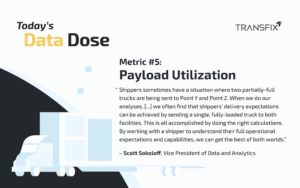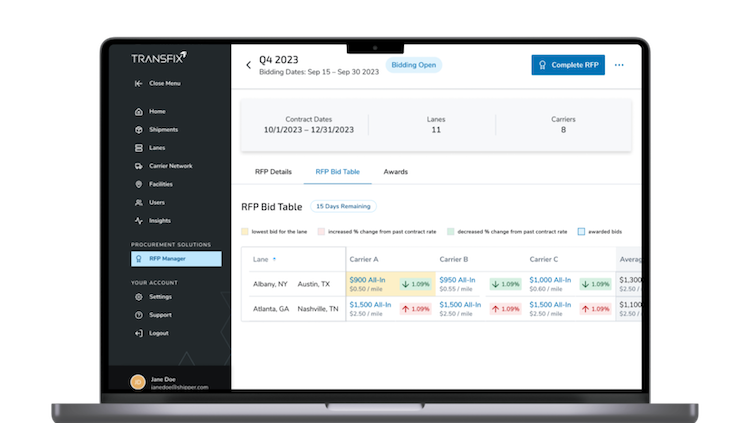Today’s Data Dose is an original Transfix series that helps shippers identify the key metrics they should track to get the most out of their supply chain. Which data measurements should an organization prioritize, considering their unique pain points, network, and goals?
We’ve got answers. We’ve got insights.

Metric 5: Payload Utilization
What does payload utilization have in common with carpools? Picture a group of parents who need to transport kids to soccer practice. Because “one fully-filled vehicle making multiple stops” is more efficient than “several partially-full vehicles making one stop,” families consolidate their loads. Whether we’re talking about minivans, station wagons, or freight trailers, this “carpool principle” generally holds true.
One important metric to consider is whether trucks are handling the most cost-effective load sizes. If 42,000-pound capacity trailers are regularly off-loading only 34,000 pounds of freight—or if they are underutilizing their volume—that can add up over time to wasted labor hours, inventory deficits, and other inefficiencies. That empty trailer space leaves a lot of (literal) room for improvement. Shippers can leverage payload data to optimize their planning.
James Duke, Director of Account Management at Transfix, points out that fuel waste is also a factor. “The higher the payload utilization, the fewer trucks there are on the road, thus minimizing the company’s carbon footprint,” he says.
More efficient payload utilization can add up to big savings. Scott Sokoloff, Transfix’s Vice President of Data and Analytics, shared the following: “Transfix recently completed an analysis for a midsize consumer packaged goods shipper partner. Through our team’s expertise and software insights, we’ll be helping them utilize their available cargo space more effectively.”
Coming back to our carpool metaphor, let’s consider the driver who’s on their way to pick up the other four families’ kids. Typically, that person will plot out the most efficient route for those pick-ups, one with the least amount of back-tracking. Unfortunately, the complexity of today’s supply chain is a great deal more complicated than “a few stops across town (and maybe an ice cream break).”
“Shippers sometimes have a situation where two partially-full trucks are being sent to Point Y and Point Z,” says Sokoloff. “When we do our analyses of the individual pick-up and drop-off points, we often find that shippers’ delivery expectations can be achieved by sending a single, fully-loaded truck to both facilities. This is all accomplished by doing the right calculations. By working with a shipper to understand their full operational expectations and capabilities, we can get the best of both worlds.
“Through this consolidation, we’ve worked to show shippers where they can reduce their total shipments and their overall shipment spend. We estimate that this particular customer will save more than 5% through consolidation alone, in addition to our other service improvements.”
Could your organization be utilizing payloads more efficiently? Click here to learn more about Transfix’s Intelligent Freight Platform. And keep an eye out for our next Data Dose: #6, Carrier Metrics.




![[Webinar Recap] The Market Rebalance is Coming: Critical Strategies to Fortify Your Carrier Network](https://transfix.io/hubfs/Transfix_February2023/images/truckcarrier.jpg)